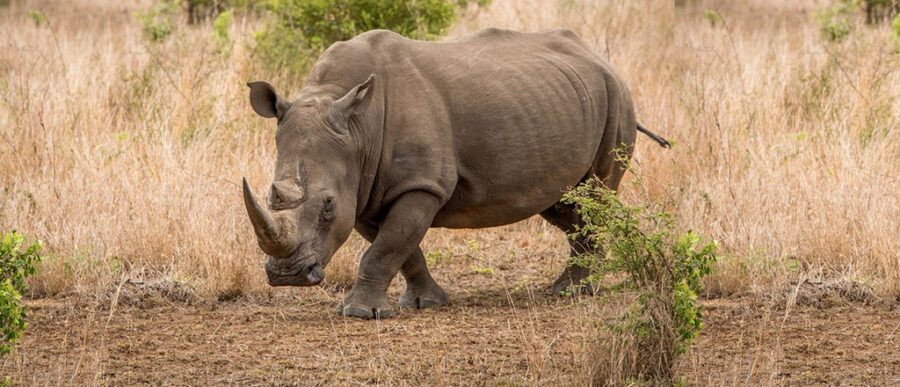Google and the World Wildlife Fund last week brought together 21 technology companies to form the Global Coalition to End Wildlife Trafficking Online. The coalition, which includes eBay, Facebook, Microsoft and Instagram, hopes to reduce wildlife trafficking across online platforms by 80% by 2020. Policing online platforms with technological tools addresses the supply side of the problem, but consumer education is equally important to reduce the demand for products like ivory and rhino horns that end up killing animals, according to experts. It would also help to promote ecotourism and other ways to support the economies of countries like Tanzania and Zimbabwe that depend on the revenue from wildlife trafficking, they said.
Knowledge at Wharton gathered insights on the best strategies to curb wildlife trafficking from Eric Orts, director of Wharton’s Initiative for Global Environmental Leadership and Wharton professor of legal studies and business ethics; David Hayes, executive director of the State Energy & Environmental Impact Center at the NYU School of Law and chair of the U.S. Wildlife Trafficking Alliance, a coalition of corporate and nonprofit entities combating wildlife trafficking, and Crawford Allan, senior director of TRAFFIC, a wildlife trade monitoring network affiliated with the WWF. They shared their views on the Knowledge at Wharton show on Wharton Business Radio on SiriusXM channel 111. (Listen to the podcast at the top of this page.)
Here are five key takeaways from their discussion.
Disrupting the Marketing Arm
The collaboration put together by Google and the WWF “provides the most important way to disrupt that marketing arm of traffickers,” said Hayes. “The wildlife trafficking arena has brought to the fore the best in terms of cooperation among non-governmental organizations like the WWF with responsible corporations who recognize that their platforms are being used by traffickers.”
The companies in the coalition are also ensuring that they manage their reputational risks and legal liability by helping curb wildlife trafficking, said Orts, who is the co-editor of The Moral Responsibility of Firms. He recalled that biologists like E.O. Wilson warned more than a decade ago that the sixth massive extinction of species is occurring in the present times. “This period is caused by the human species inadvertently for the most part,” he said. “We are expanding so much in terms of our economic footprint and other activities that many species are threatened with extinction and so we really have to have an all-hands-on-deck policy about [curbing trafficking].”
“We are expanding our economic footprint and other activities — many species are threatened with extinction.”–Eric Orts
Orts hoped that over time, other groups and companies join the effort. On that note, Hayes said the U.S. Wildlife Trafficking Alliance has brought together airlines like United Airlines and Jet Blue, cruise companies like Royal Caribbean and Carnival; and fashion and jewelry companies, in an exercise to combat trafficking.
Fertile Trafficking Ground
According to Crawford, there has been “an exponential growth in the availability” of wildlife and related products such as ivory. He said that while a recent study found a significant drop in ivory sold through bricks and mortar stores, traffickers have moved their activity to online channels where they can escape detection.
“Online has become the way everybody is trading in wildlife, because you don’t have a physical presence on the ground that people can go and snoop around and investigate,” Crawford said. “It’s just become a no-brainer for criminals that are operating in cyberspace. When you’ve got this global market and reach where you can pretend to be anywhere, it’s making a lot of profitable sense for them, unfortunately at the great expense of some of our most precious species.” He noted that last year, the online auction house eBay alone, working with Allan’s organization, removed 45,000 illegal wildlife ads from its site.
“Online has become the way everybody is trading in wildlife — you don’t have a physical presence people can go and snoop around and investigate.”–Crawford Allan
Consistent Enforcement is Vital
Crawford made a case for globally consistent enforcement of policies to combat wildlife trafficking. Many companies have “sound and consistent” policies of prohibitions that their users and enforcers are aware of, he noted. “We want that to be consistent globally, because of the so-called ‘whack-a-mole’ effect, where if one side has a weak link and doesn’t prohibit many products or isn’t good at enforcement, then the illegal traffickers will gravitate to that weak spot.”
Companies in the coalition typically enforce their policies at two levels, he added. One is by using automated algorithms or filters that prohibit the posting of illegal wildlife acts even before they can go online, followed by manual checks to catch those that the filters fail to catch. The second prong involves training staffers in detection techniques and spreading awareness. He called for “a global collective of like-minded citizens who can be the eyes and ears for companies,” called ‘wildlife crime cyber spotters.’
Curbing Demand with Education
Orts said that in addition to policing the supply and the intermediaries — criminals trafficking in wildlife – it is important “to attack demand” from consumers. He recalled the case of how jewelry store Tiffany addressed trading in “blood diamonds,” where the sale proceeds finance wars or insurgent activity. With internal policing policies and other resources, the company aims to ensure that the diamonds it sells are not illegally mined or go to support insurgent activity, he said. In the case of other products, such as rhino horn dust that some people believe enhances sexual performance, he advocated top-down education of consumers, with active participation of NGOs. “You have to educate people that this is crazy, that this is scientifically not correct, and that this practice is killing these magnificent creatures,” he added.
According to Crawford, a one-size-fits-all approach would not work, and each company has to create strategies that suit its business. He pointed, for example, to Instagram, which provides alerts to users on the risks of trafficking in endangered species if they happen to search for certain wildlife hash tags. Microsoft’s Bing and Google, which have both search and shopping functions, could similarly have their own strategies to stay a step ahead of traffickers, he said.
Crawford noted that traffickers try to evade detection on social media sites with legitimate-looking fronts for closed groups that trade in endangered species, including live animals, for collectors. “It is a bit of an arms race right now,” he added. Traffickers find ways around filters on online channels with devious techniques like inserting key words in images, he noted. “So you have to get into the realm of image recognition to try and to identify what’s in the image rather than looking at the words.” His organization plans a machine-learning workshop in the fall that Microsoft has expressed interest in hosting. The workshop will aim to bring academia, the tech industry and law enforcement together to identify strategic and technical ways to tackle the problem for the long term.
“The collaboration [put together by Google and WWF] provides the most important way to disrupt that marketing arm of traffickers.”–David Hayes
Support Home Countries
In order to secure the requisite buy-in from countries that depend on the revenues from trafficking in endangered species, it would help to provide them alternative sources of income, said Orts. Promoting ecotourism would help. “That could be a great boon to these countries if people are doing safaris and adding value to the local economies, so that they are not then dependent on smuggling and killing the animals.”
“The local economies in the range countries are incredibly important,” said Hayes. “We’re finding so much interest from the ecotourism sector in educating consumers about the risk of being presented with illegal products to buy and to bring home to the U.S.” In that effort, the U.S. Wildlife Trafficking Alliance is working with Expedia and the Adventure Travel Tourism Association that includes travel agents, cruise lines and airlines.



